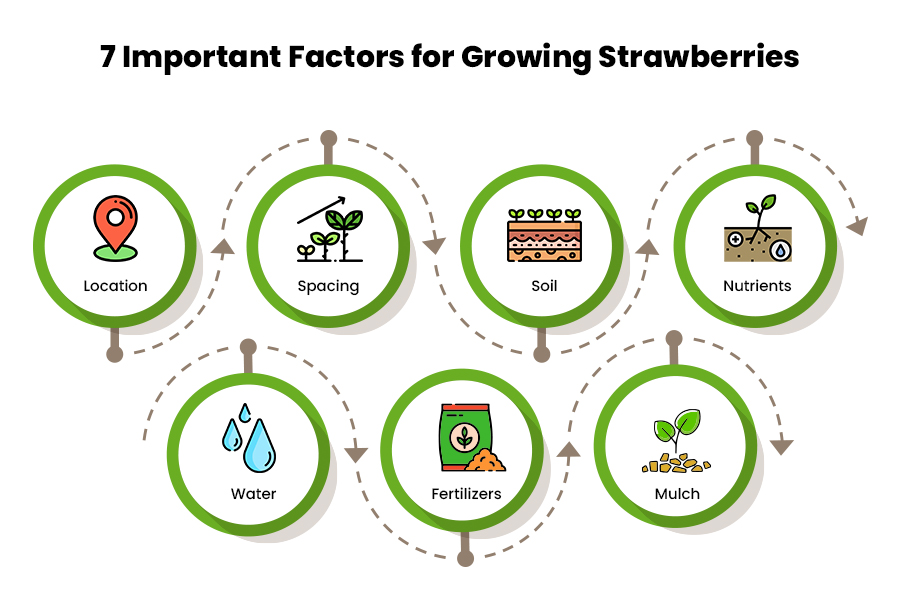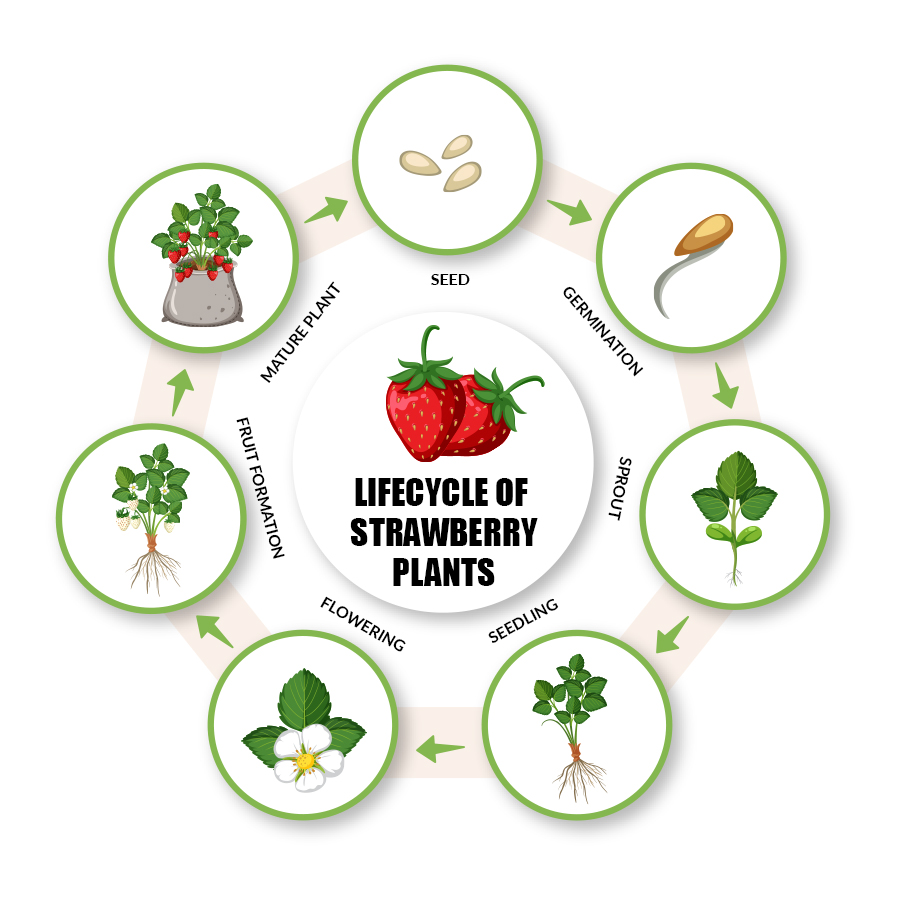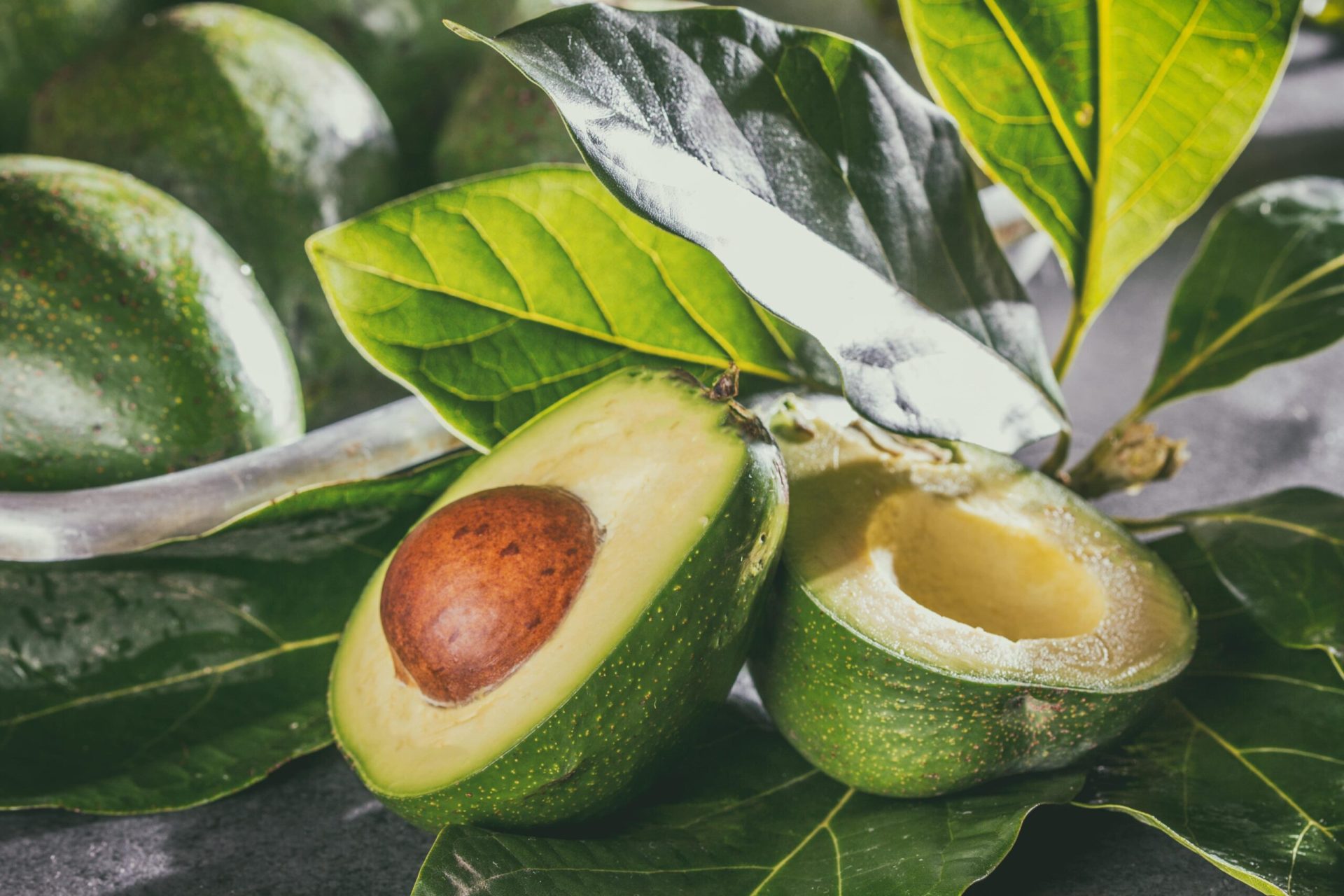Growing strawberries is a favorite of many gardeners. The reason: Strawberries are one of the easiest berries to grow, and they’re undeniably delicious. This low-maintenance crop offers big flavor and sweetness, and fortunately, they produce fruit for 4-5 years!
Growing strawberries can be incredibly rewarding, and homegrown strawberries taste better than store-bought varieties. Want to make your strawberry patch the best on the block? This guide will help you learn everything about growing strawberries, including strawberry growing stages, harvest and storage tips, and the best varieties to grow in your home garden.
Growing Strawberries 101: Step-by-Step Guide

1. Location
You can grow strawberries in the ground, in containers, or in raised beds. Strawberry plants love the sun! Pick an area in your garden that receives 8-10 hours of sun every day throughout summer for optimal growth and maximum yield.
2. Spacing
The spacing of strawberries depends on the variety you choose. However, as a general rule, space your strawberry plants about 12-18 inches apart with up to 4 feet between rows. Allow enough room for their runners to spread easily (they grow quick!).
3. Nutrients
Nutrients like nitrogen (N), phosphorus (P), and potassium (K) help berries in vegetative growth and fruit production. Nutrient requirements may vary depending on the growing stage of strawberry plants. However, check your soil before planting.
4. Soil
Strawberries require loose, well-draining soil enriched with organic matter. Loamy and slightly acidic soil is perfect for growing strawberries.
Before you plant strawberries, ensure that the soil is loose and crumbly, as it will allow roots to spread easily. Use compost or rotted manure to improve soil structure and provide essential nutrients to the plant. Here are some soil prep tips for strawberries:
- Work in compost or aged manure a few months before planting.
- To further improve drainage, rake clay soil into raised mounds and generally mix in 4 inches or more of compost.
- If your soil is sandy, all you need to do is cultivate it lightly to get rid of weeds and mix in a1-inch layer of rich compost or rotted manure.
- The ideal pH range for the soil is between 5.5 and 7. Before planting, amend your soil if necessary.
5. Water
Water your strawberries regularly, especially during dry spells. Water deeply as it will keep the soil moist and encourage deep root growth. Make use of drip irrigation or soaker hoses to water plants. It helps deliver water directly to the soil and reduces the chance of plant diseases. Mulching strawberry plants will reduce the need for watering.
6. Fertilizing Strawberries
You should make use of a balanced fertilizer when you plant strawberries. Add organic sources of Nitrogen (N), Phosphorus (P), and Potassium (K) of 2 pounds per 1000 square feet. Another tip: Fertilize your strawberry plants again after the second harvest to improve growth.
7. Mulch
Mulch helps avoid weed growth, retains soil moisture, and provides essential nutrients to strawberry plants. Mulch around the plants with compost or straw. Another option is black gardening fabric. However, be careful with black fabrics, as they can increase heat.
Growing Strawberry Plants: When and How to Plant
You can plant strawberries either in early spring or late fall. Make sure the last frost has passed. Generally, as soon as the soil can be worked in the spring, you can plant strawberries.
However, if the threat of frost exists, be sure to protect your strawberry plants with garden fabric or row covers.
Strawberry Planting Instructions
Generally, most gardeners choose to grow strawberry plants from a nursery. This helps improve yield and speeds up the time a gardener will be able to harvest fruit. Fortunately, transplanting nursery-grown strawberries is very easy.
To plant strawberry plants, follow below steps:
- Dig a hole that is deep and wide. You’ll want to accommodate the root system, as well as loosen soil around the roots to allow for growth.
- Place the strawberry plant so that the crown (at the base of the leaves) aligns with the soil level.
- Backfill soil around the roots, tamp them down gently, and water the plant to settle.
- Ensure there’s proper plant drainage, as strawberries don’t like wet soil. You can add perlite or add rocks atthe bottom of a half barrel to increase the garden.
Strawberry Growing Stages
Strawberries may be grown from bare-root plants, nursery-grown plants, or grown from seeds. The choice of plantingmethod affects the initial stage of growth. In general, strawberries are typically planted in the spring or fall,
depending on your local climate.
- Bare-Root Strawberries are dormant plants without soil or leaves, typically sold with exposedroots. Time to Fruit: Usually takes 1 year to start fruiting after planting.
- Crown-Grown Strawberries are young strawberry plants with roots and some leaves, consisting ofthe crown (central growing point). Time to Fruit: Typically produce fruit in the first year after planting, usually within a few months.
- Seed-Grown Strawberries are grown from seeds, typically starting as small seedlings. Time to Fruit: Typically takes 1-2 years or more to produce fruit when grown from seeds, making them the slowest method to fruit production.
Planting
Place young strawberry plants directly in the ground or containers. Planting them correctly and ensuring proper space, depth, and soil quality is essential. Water adequately and offer the best care to your strawberry plant.
Establishment
After the planting stage ends, strawberries enter the establishment stage, where they develop a strong root system and healthy leaves. During this time, it’s important to regularly water, mulch, and protect plants from harmful pests and diseases. Be sure to keep up with weeding in this stage, which typically lasts for a few weeks after planting.
Vegetative Growth
During this stage, a strawberry plant springs to life by producing leaves, flowers, and stolons. After three weeks,stout dark green foliage appears at the tips. Fertilizing your plants during this stage will facilitate faster growth, a healthy root system, and eventually, help to maximize fruit yields.
Flowering
In this stage, the plants start producing flowers, which become fruits. The flowers are small and white, with five petals clustered in quartets or pairs. The buds begin to appear typically in spring or early summer, followed by the flowers blooming.
Pollination
After the flowers appear, the plant enters the pollination stage. Strawberries are a self-pollinator. During this stage, the plant fertilizes its flowers and forms the fruit. The stamens (male flower part) transfer pollen to the pistil (female flower part).
Although all strawberries are self-pollinating, they can be cross-pollinated. Drawing pollinators to your flower bed, especially a diverse mix of insects, can help to improve the size of the fruit and flavor.
Fruit Formation
After the pollination stage, the plant starts forming fruit. The fertilized flowers start developing tiny green fruits. As strawberries grow, they start to gain in size, and turn into the red, juicy fruit we all love. This stage takes anywhere between 30 to 45 days.
As the fruit grows, it swells, changing from green to white and finally red. The fruit size may vary based on the variety of strawberry plants and their growing conditions.
How to Harvest Strawberries?
As soon as strawberries turn fully red, you can harvest them. The berries usually are ready to harvest about 4-6 weeks after the plant blossoms. When the plants start producing fruit, check them daily so that none of the berries get overripe before picking. Ensure you cut by the stem and do not pull the berry, as it might cause damage to the plant.
How to Store Strawberries?
To extend the lifespan of strawberries, you should transfer them directly to the refrigerator. The most effective way is to store them in a single layer in an airtight container and follow these steps:
- Wash them only when you plan to eat them
- Keep them as whole berries
- Keep wrapped in a paper towel stored in a plastic or glass container
- Place them in a single layer inside an airtight container
- Seal the container tightly and keep it in the refrigerator
NOTE: Always check strawberries for mold or other signs of spoilage, before consuming them.
Freeze Strawberries
You can freeze strawberries for long-term storage. Below are some tips for freezing strawberries after you harvest them:
- Wash strawberries before you freeze them
- Remove their leafy tops
- Dice or slice strawberries prior to freezing
- Sort through the pile and remove strawberries that show signs of mold or that are no longer firm
Best Strawberry Varieties for Backyard Gardens
When selecting a strawberry variety, consider climate, your available space, and how you will use them.
The key to harvesting juicy berries is to grow a variety suited to your climate. There are four main varieties of strawberries:
1. June-bearing
June-bearing varieties produce a single large crop in the late spring to early summer, usually during June. This variety is well-known for its high yield and excellent flavor. Surecrop strawberries are a favorite varietal that grow in Zones 4-8.
2. Everbearing
Everbearing strawberries produce multiple harvests throughout the growing season. It yields smaller crops, with its first harvest in the early summer or late spring. Farmers harvest additional strawberries in the late summer and fall season.
This variety is well-known for its continuous supply of fresh berries. Albion strawberries are a favorite everbearing variety, known for their large size and reliable firmness. Grows in Zones 4-7.
3. Day-neutral
Day-neutral variety is unique as it produces fruit consistently throughout the growing season. It can quickly flower and grow fruits, making it a good choice for different climates, and produce regardless of the day
length. Tribute is a variety day-neutral variety that’s commonly cultivated in the Eastern U.S.
4. Alpine
Also, well-known as wild strawberries, this variety produces small but flavorful berries. They don’t yield large quantities like cultivated varieties. Alexandria strawberries are a popular strain that are also used as a landscaping element.
Infographic: Lifecycles of Strawberry Plants





